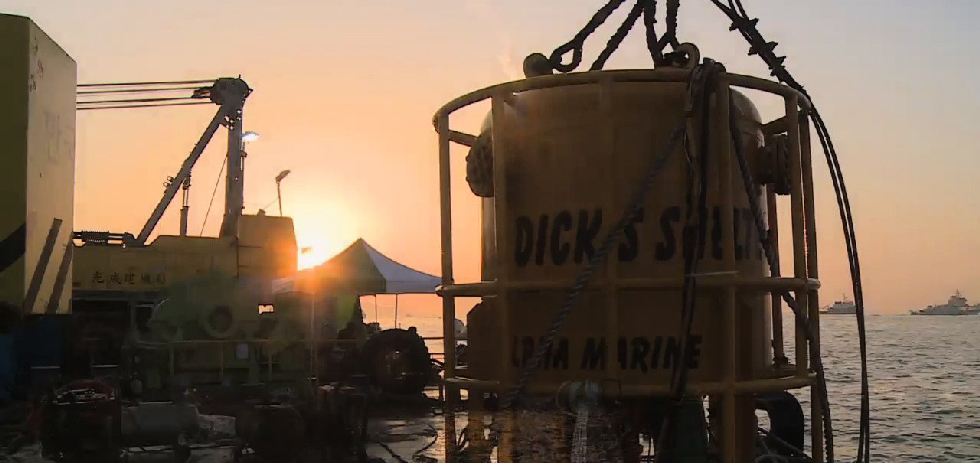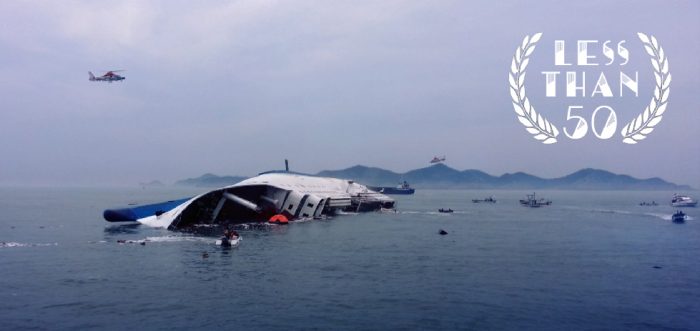In our regular column, Less Than (Five) Zero, we take a look at films that have received less than 50 logged watches on Letterboxd, aiming to discover hidden gems in independent and world cinema. This week Conor Bateman looks at the controversial South Korean documentary The Truth Shall Not Sink with Sewol.
Date Watched: 7th January, 2016
Letterboxd Views (at the time of viewing): 4
Last December Lee Yong-kwan, festival director of the Busan International Film Festival, was accused of fraud by The Board of Audit and Inspection of Korea and the city in which his festival is held. As the major financier of the festival, the Busan city government’s decision to file charges against Lee is particularly worrying. What makes it worse is that, at least as represented by international media outlets, the motivation for legal action is less the supposed fraudulent activity than a petty act of revenge.1
In 2014 controversy hit the largest film festival in Asia over their decision to screen the documentary The Truth Shall Not Sink with Sewol (then known as Diving Bell). The film is a journalistic account of the Sewol ferry disaster, which claimed the lives of over 300 people earlier that year. Its “journalistic” approach is markedly different to the one taken by major media outlets in South Korea at the time, who in the film amount to little more than tools of propaganda for the government.
Our protagonist is reactionary journalist Lee Sang-ho, whose biggest coup to date was uncovering corruption in the Samsung group in 2005, specifically with regards to accusations of bribing South Korean presidential candidates. As the film begins he’s newly redundant, fired by MBC for challenging their insufficient coverage of the ferry disaster. Flanked by co-director Ahn Hae-ryong he joins the victims’ families in protesting up and down the coastline, interrogating local coast guard and politicians at impromptu press conferences.
It’s not a particularly subtle film in this regard—Lee Sang-ho comes across (in his own film, no less) as a heroic crusader for justice, the government look like bumbling idiots—but the story they tell is an urgent and furious one; using audio recordings, other news clips and interviews they very convincingly assert that the government were grossly negligent in their recovery efforts (leading to many preventable deaths) and that they then used the media to cover up their inaction by smearing the name of Lee Sang-ho and a group of civilian divers who volunteered to assist the rescue operation.

It’s unsurprising, then, that even the film’s opening titlecards are starkly confrontational:
The Sewol ferry, which carried 325 Danwon High School students, who were on a school trip, sank on April 16th, 2014.
However, the government of South Korea reported that all of them were rescued.
Because so much of the film is grounded in roving camera footage and interviews, what’s most affecting is the slow realisation on the part of civilian diver Lee Jong-in that he’s being ignored and then used as a pawn by the country’s government. It’s heartbreaking stuff: on two separate occasions he makes his way to the coastline with equipment and his team after being summoned, only to be told he can’t deploy his diving bell. In a sense The Truth is also a dual character study of both Lee Sang-ho and Lee Jong-in, whose livelihoods are placed on the line because of their selflessness.
Unlike many documentaries with an activist streak, The Truth is a streamlined affair that nimbly moves through the weeks of footage, all a testament to the work of editor Jin Hyo-min. Its efficiency of presentation is perhaps also due to its de facto producer, GObalnews (고발뉴스), which Lee Sang-ho founded just prior to the time of filming and who have released the film in a “director’s cut” for free on YouTube (embedded below).
Not only in its release, the film itself is an interesting reflection on the evolving technological nature of journalism. One sequence sees Lee Sang-ho livetweet his inspection of Lee Jong-in’s diving bell, and the tweets appear onscreen alongside him. In addition to this, there’s a segment of the film that runs through the social media posts from the schoolchildren trapped in an air pocket in the sinking ship, which Lee Song-ho uses to map out a timeline for when the government rescue should have occurred and what information was available to them at the time.
It’s a shame that Ahn Hae-ryong and Lee Sang-ho’s compelling film hasn’t been widely seen outside of Korea, where it achieved significant box office success for a documentary feature. It makes for near-vital viewing not only as a document of crisis but also a damning indictment of a seemingly corrupt bureaucracy. The bureaucracy in question is already alarmed, their attacks on the Busan International Film Festival say as much. Both that festival and this film warrant international support, so I’d encourage you to give this film a watch right now:
